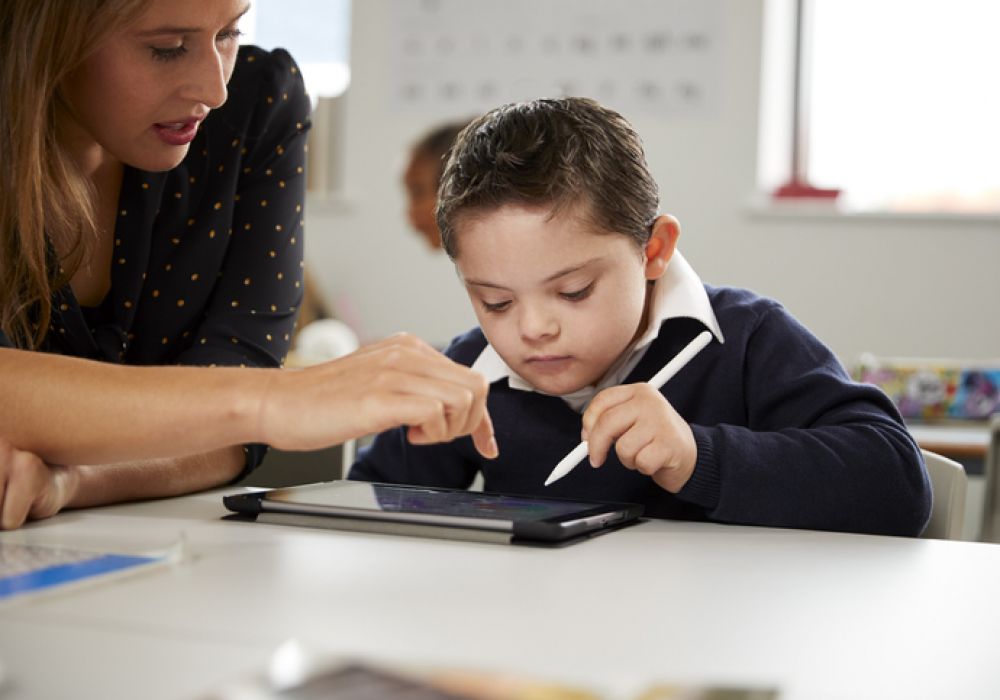How Wireless Technology is Revolutionizing the Classroom

Reading time: 6 minutes
Education has changed significantly over the past two decades. It has taken different forms and shapes in recent years. Gone are the days when physical interaction was the only way to communicate with your teacher or fellow students. With the advancement in wireless internet technology, it is easier now more than ever to learn and receive education.
The traditional classroom situation where one teacher stands in front of a class of students has evolved to classroom learning with the aid of devices and wireless connectivity.
In fact, one of the main benefits of using technology for classrooms is that unlike a classroom led by a teacher, where students passively receive whatever information the teacher is providing, in tech savvy classrooms, students are active participants.

Following are several of the ways in which wireless technology is changing the classroom.
Access to Information
In this digital era, wireless technology has made information more accessible than ever. The use of smartphones and tablets in the classroom allows easy access to a wealth of information and resources online.
Students can access learning materials such as e-books, videos lectures, and research papers to supplement their learning experience. Teachers can also access various online education resources and engage in real-time collaboration with other interested educators to build a strong educational community.
Flipped Classroom Model
Wireless technology has also allowed teachers to adopt the flipped classroom model. In a flipped classroom, students study course material before attending class, then attend class to work on assignments and explore more and questions collaboratively.
This model is made more effective with the aid of wireless enabled devices which allow teachers and students together to access course material before class. The teacher then uses the classroom time in interactive way to help students understand difficult concepts, answer questions, and provide feedback.

Increased Collaboration
Wireless internet technology has also revolutionized how students work together to solve problems. It has made student collaboration an essential component of learning. With wireless connections and devices, students and teachers can employ tools that facilitate dynamic collaboration.
Students can work collaboratively on projects using applications such as Google Docs, OneNote, and Asana. They can also use wireless technologies such as screencasting software to share their findings with their peers. Group projects become easier to manage when students can work and together electronically anytime and anywhere.

Better Engagement
Wireless technology has made learning more engaging and dynamic. Interactive learning tools, such as virtual reality, simulations, and games are now widely used in classrooms to further skills and increase student engagement and motivation.
Teachers can use interactive tools/instruments to explain complex concepts and create an immersive learning experience for learners. The use of wireless technology has helped to foster a more engaging learning experience, which in turn, helps to promote continuous learning and better education outcomes.

Accessibility: Online Education
Wireless technology has made education more available to all students regardless of their physical location. With the development of wireless technology, students can access online courses and learn from home. The use of devices and wireless technology has made a virtual classroom available anywhere there is an internet connection.
This means students who are physically unavailable to attend classes due to various reasons can still access education and continue learning.

More ways in which wireless technology is impacting and revolutionizing the classroom:
Connectivity and Internet Access
Wireless networks have provided seamless and reliable internet connectivity to classrooms, enabling students and teachers to access a vast amount of online resources, educational materials, and research data.
This has transformed the world of the traditional classroom into a global learning environment, expanding the horizons of education beyond the physical confines of the campus of the school. Teachers can present lessons wirelessly from a laptop, draw on the whiteboard digitally, and connect with other classrooms or remote experts through audio or video conferencing.

Mobile Devices and Tablets
The widespread adoption of mobile devices and tablets has empowered students with increased access to educational apps, interactive learning platforms, and digital textbooks.
Teachers can leverage the power of these devices to further instruction and facilitate personalized learning experiences, engaging students with interactive content and real-time assessments.

Interactive Learning
Wireless technology allows for interactive whiteboards and smart displays, creating dynamic and engaging learning environments.
Teachers can use these tools to present multimedia content, collaborate with other students, in real-time, and incorporate gamification elements to make learning more enjoyable and effective.

Distance Learning and Virtual Classrooms
Wireless technology has played a crucial role in the growth of distance learning and virtual classrooms.
Video conferencing tools and online collaboration platforms enable remote education, connecting students and educators across different locations, thereby breaking down geographical barriers.

Cloud-based Collaboration
Wireless connectivity has facilitated cloud-based collaboration, allowing students and teachers to store, share, and access educational materials, projects, lessons and assignments from anywhere, at any time.
Cloud-based tools promote seamless teamwork and enable easy access to resources beyond the classroom.

Internet of Things (IoT) in Education
IoT devices are making their way into classrooms, providing a more connected and data-driven learning experience.
Smart sensors and wireless devices can help monitor the classroom environment, optimize energy usage, and track student performance and behavior, leading to data-driven insights for educators to improve teaching strategies.
Personalized Learning
Wireless technology enables data collection and analysis, which can be used to personalize the learning experience for individual students.
Adaptive learning platforms can track students' progress, strengths, and weaknesses, offering tailored educational content and support to cater to each student's unique needs.

Digital Assessment and Feedback
Wireless technology facilitates the implementation of digital assessment tools and online quizzes.
These tools can provide immediate feedback to students, helping them understand their mistakes and improve their learning outcomes.
Overall, wireless technology has revolutionized the classroom by enhancing connectivity, interactivity, and accessibility.
It has enabled a more personalized and data-driven learning experience, empowering students and educators alike with innovative tools to make students learn and thrive in the digital age.

Conclusion:
The use of wireless technology in the classroom is transforming the education sector. It has facilitated numerous benefits including access to information and resources, encouraged collaboration and specialized classes, improved engagement levels, and made education more accessible.
Wireless technology has brought a new level of dynamism to the learning process and has for example helped to bridge the gap between traditional classroom learning and new-age learning methods.
As technology continues to evolve, we can expect to see further advancements in how it is applied at educational institutions around the world.
Now that you're well versed on the impact wireless technology is having on education, it's time to educate yourself on all the ways to save with PureTalk. Phone plans start at just $25 a month for unlimited talk, text & 3GB data and 2GB hotspot. Tablet plans that start at $10 a month with 2GB of data. PureTalk gives you more. More data and hotspot on every plan for the same price.
Posted 11 months ago
